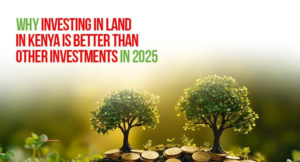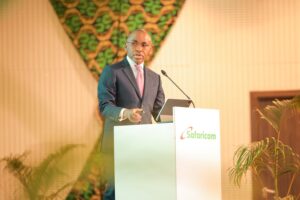Opinion: Is Electrification The Answer To Sustainable Innovation?

By Carol Koech, Country President – East Africa, Schneider Electric.
Globally, there is a broad consensus that electrification is the most viable way to decarbonize systems and processes powered by fossil fuels. It is estimated that the share of electricity in the global energy mix will grow from 6% today to at least 40% by 2040. But here’s the catch: even as regional economies ramp up electrification, we run a very real risk of massive and detrimental impact on the planet – unless we re-envision it within the sustainability and climate actions framework.
In 2019, East Africa had an electrification level of 36%, with over 140 million people lacking access. To put this into perspective, the global electrification level in the year 1999 was 74.7%. When we talk about the lack of access to electricity in these parts, we aren’t talking about just darkness after sundown; we are talking about a detrimental impact on education, healthcare, food systems, employment, and, broadly, socioeconomic development. Kenya achieved an electrification rate of 75% in 2021 — up from 53% in 2016 — this is a significant progress because of its implications for the lives and livelihoods of millions, particularly the ambitious younger generation.
The cause for my optimism also stems from the inherent promises of electricity. It is 3–4X more efficient than other energy sources. This implies that the institutional emphasis on electrification in Kenya is consequential. Such development is beneficial, because it complements growing climate actions. However, it also comes with its challenges.
Electricity and its carbon concomitants
In 2019, hydropower accounted for 54% of the electricity produced in East Africa, followed by natural gas, oil and coal at 29%. While not the mainstay of electricity production, fossil-fuel-based thermal power plants — which are energy and carbon-intensive — must be scaled down significantly as this status quo is antithetical to the core objective of reducing GHG emissions. This is the case across the globe, and East Africa is no exception as the region is suffering from the challenges of climate change. It is already manifesting through unprecedented rains, floods,rising waters droughts, and temperatures. So, at this critical juncture, when regional economies are ramping up electrification, there is a pressing need to re-envision it within the sustainability and climate actions framework. Additionally, owing to the growing population and a consequent increase in energy demands, electrification efforts must emphasize reliability, dispatchability, and efficiency.
Electricity 4.0, not electricity, is the way forward
If electricity is one of the most viable means to address climate change, it is only right that it is sustainable, ethically produced, equitably distributed, and made accessible to all. This shift is so paramount that we at Schneider coined a term for it: Electricity 4.0. Just like Industry 4.0 — the evolutionary phase that marked greater integration between the physical and digital worlds — Electricity 4.0 posits a more-electric, more-digital world. It requires stakeholders to view the world through the lens of electrification and digitalization, and unlock value at their intersection. From renewables-led production to digitalized grids, electricity must be re-envisioned. So, the “zero” in Electricity 4.0 also symbolizes a zero-waste, zero-emissions, and zero-carbon future.
Renewables and East Africa: Of systemic strengths and untapped potential
Policymakers across the world are provisioning to increase the share of renewables in electricity production. So, we expect the contribution of renewables to electricity production to increase six folds by 2040. In East Africa, renewables account for about 71% of electricity production, but they have the potential to be the entirety of the generation mix. The region experiences high levels of solar irradiance, which can be harnessed for electricity production, especially considering the costs of solar cells and panels have reduced significantly. In 2019, hydropower (including mixed plants) constituted almost 78% of the total renewable energy generated in the region.
For its part, Kenya has set good precedents in harnessing renewables, particularly geothermal energy, to tap into Electricity 4.0. The country has emerged as a clear leader in renewable energy, thanks to frameworks such as the Rural Electrification and Renewable Energy Corporation (REREC). Founded as the Rural Electrification Authority (REA), this government organization was later renamed with the addition of “renewables”. This synthesis of rural focus, electrification objective, and the renewables shift epitomizes Electricity 4.0. The only remaining prerequisite is digitalization.
Electricity enables innovation, which, in turn, facilitates the shift to Electricity 4.0
The USAID, in 2019, said that the lack of financing and opaque production processes are the bottlenecks hindering growth in Kenya’s power sector. In this scenario, the first order of business is to attain more visibility into how energy is being utilized in existing systems. IoT and analytics platforms find an application in this context. They do not merely provide insights pertaining to inefficient processes and energy consumption, but also create opportunities to add renewables to the mix. Existing grids in East Africa, particularly Kenya, are ripe for such solutions.
Higher adoption of IoT-led solutions in initiatives such as the Eastern Africa Power Pool — a collaborative effort by eleven regional countries to interconnect their electricity grids and take advantage of excess capacity — could work wonders for the region. The resulting digital grids will be more attuned to decarbonization measures and capable of bi-directional decentralized power transfers. Additionally, they allow cloud connectivity, centralized monitoring, remote operations, proactive troubleshooting, etc. — all leading to higher efficiencies, lower wastage, and utmost resilience.
In a study using Schneider EcoStruxure — an IoT-led, plug-and-play, open, interoperable architecture platform — we registered up to 80% reduction in engineering costs and time, up to 75% reduction in maintenance costs, and up to 50% reduction in carbon footprint, on average, across sectors.
In the context of East Africa, the most important advantage of digitalizing electricity grids is its impact on “dispatchability”. The presence of IoT sensors across the value chain leads to efficient storage and enhances dispatchability to remote, rural areas. Reliable grids can be of great consequence in areas where low literacy rates and maternal and perinatal mortality have been linked to the unreliable power supply.
On the economic front, IoT-led solutions can play a vital role in enhancing efficiencies in critical sectors such as agriculture — a primary GDP driver in Kenya, accounting for the livelihoods of 70% of the population. IoT platforms’ ability to drive precision farming, smart irrigation, and end-to-end traceability has big implications for regional socioeconomic growth. And yet, we will have only scratched the surface of the endless possibilities that Electricity 4.0 carries.








